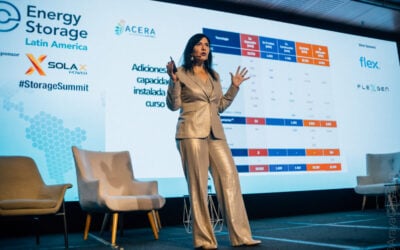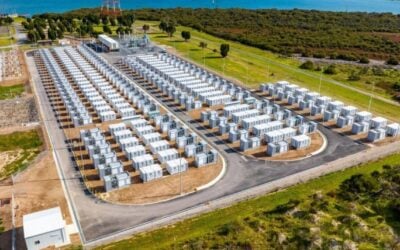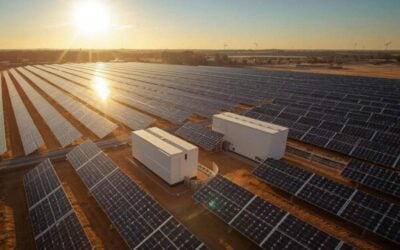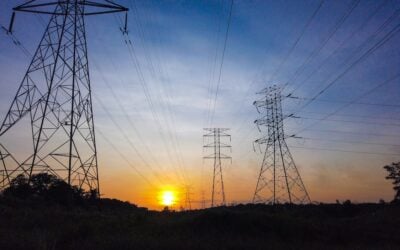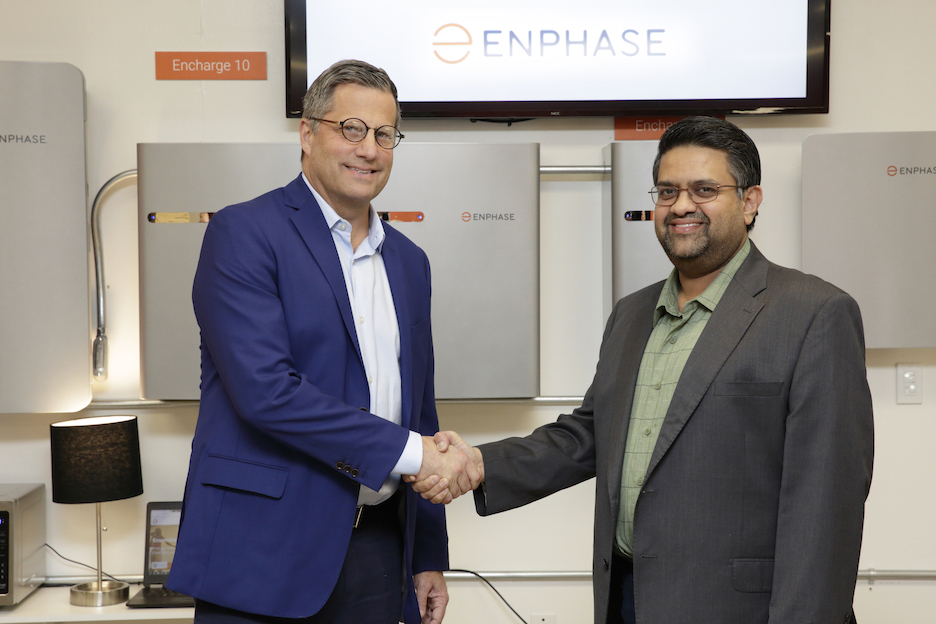
US construction and home improvement company PetersenDean has selected Enphase’s equipment including battery storage for its solar home offerings, with a particular emphasis on California’s Home Solar Mandate.
Enphase will be the contractor’s “premier supplier”, the tech company said. While originally best known for its panel-level microinverters, Enphase’s “all-in-one smart energy system” now includes the solar microinverters along with battery storage and an energy management suite.
The battery energy storage systems are available in 3.4kWh and 10.1kWh usable capacities and are scalable to larger sizes, coming with 10-year limited warranties, while the microinverters have a 25-year warranty in line with solar system lifetime expectations.
Branded Encharge 3 and Encharge 10 respectively, the company opened pre-orders for the batteries in November last year at the height of conversation around California’s power line shut-offs in the wake of wildfires. Enphase said the microinverters are grid-forming and have an Always-On setting to allow homeowners to keep appliances running even when grid power is not.
Try Premium for just $1
- Full premium access for the first month at only $1
- Converts to an annual rate after 30 days unless cancelled
- Cancel anytime during the trial period
Premium Benefits
- Expert industry analysis and interviews
- Digital access to PV Tech Power journal
- Exclusive event discounts
Or get the full Premium subscription right away
Or continue reading this article for free
As of the beginning of this year, California’s various existing policy measures to drive forward solar adoption in the state including the Self-Generation Incentive Programme (SGIP) were joined by the mandate, the first in the US to be introduced at state level.
Part of the building codes, solar installation company EnergySage recently wrote on its company blog that new homes constructed this year require the addition of a solar photovoltaic (PV) system as an electricity source, and should be sized adequately to meet the building’s annual electricity consumption. EnergySage noted that the addition of battery energy storage can somewhat reduce the sizing requirement – by as much as 25% in some cases as the batteries help to meet the required load.
While PetersenDean and Enphase are rolling out the systems in nine US states in total, Enphase president and CEO Badri Kothandaram referred directly to the importance of the California Home Solar Mandate in a statement.
“Petersen-Dean has more than a million roofs under its belt and works directly with more than 400 home builders and general contractors, and Enphase takes great pride in being selected as its all-in-one smart energy system provider. The California solar mandate requires new home construction to include solar PV systems as an electricity source, and Petersen-Dean is ideally positioned to ensure that home builders deliver a high-quality solution,” Kothandaram said.
VPP early adopter Sunverge partners with LG on complete home solutions
On a related note, California-headquartered distributed energy resource (DER) virtual power plant (VPP) specialist Sunverge and solar PV module manufacturer LG have partnered on a new “residential smart home energy management system”.
The offering includes Sunverge’s energy management software platform alongside LG’s solar PV systems, home battery energy storage and smart appliances. Sunverge described the systems as a “dynamic flexible load management solution” which is capable of managing more than 60% of a household’s energy load.
“By leveraging the trusted LG brand, these integrated and advanced smart home solutions will have a wider reach than ever before and will allow utilities to play a major role in electrification of homes and buildings, a key step towards reaching carbon reduction goals,” Sunverge CEO Martin Milani said earlier this month.
“Through near real-time orchestration, aggregation and management of dynamic flexible loads, combined with distributed PV generation and energy storage, far greater overall system flexibility can be achieved upstream which is required for a meaningful and reliable integration of intermittent grid scale renewables generation resources.”

